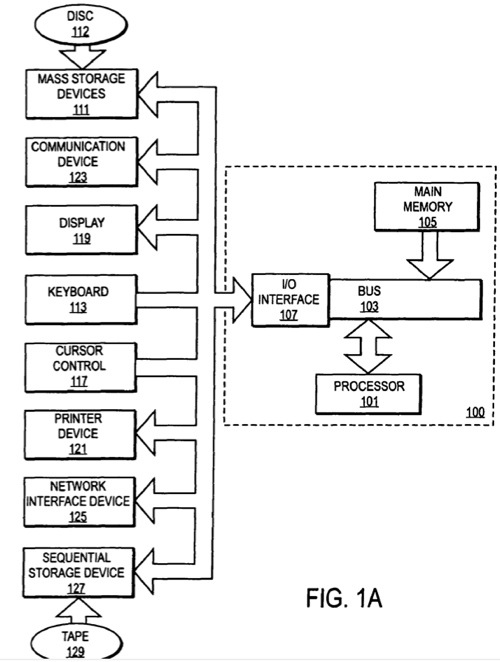A new Apple patent (number 7,827,489) at the US Patent & Trademark Office shows that Apple wants to make it easier for professional filmmakers to edit to tape. A method and apparatus is described that allows edited media to be recorded to a sequential storage device is disclosed.
An edited time based stream of information of a source media is displayed. The edited time based stream is transferred to a sequential storage device to be recorded using an icon where the icon represents a function to be performed on the storage device. The inventor is Randy Ubillos.
Here’s Apple’s background and summary of the invention: “Editing is generally the art of making subtle adjustments to a material or materials in a form that communicates a message with maximum impact. In the area of video editing, the editor defines and shapes the video and/or audio until the message to be delivered is accomplished. Generally, video editing may be divided into two categories: linear video editing and non-linear video editing. In linear video editing, the images are taken in a sequential order.
“Stated differently, one idea after another must be previously conceived and then, the video is taken in the conceived chronological sequence. For example, suppose a video is to be taken of an office, the editor must first conceptualize as to what the scenes would be and in which sequence. The editor may want to take a video of an entry into the Office. This scene perhaps followed by a focus on a pot plant in a corner. The scene may then move to the various articles on a desk and then, the scene shifting its focus to a window. In linear video editing, this is the precise sequence the video must be taken.
“By contrast, in non-linear video editing, scenes may be taken in any order and later edited according to a desired sequence. Whether linear video editing or non-linear video editing approach is to be taken generally depends on the video system that is to be used. While non-linear video editing system may be more complicated, the advantage is that the video may be taken in any sequence and later, through careful observation of the video and a thoughtful process, the video may be manipulated to communicate the message in the manner the editor wishes to convey with maximum impact. Due to its free format, the editor can readily impute creativity without being constrained physically.
“With the advancement of computer technology, further improvements have been made to the video editing system through a process called digitization. In particular, the digitization of video has had a profound impact on non-linear video editing system. Previously, copies of a film containing the video would be made. By cutting and splicing the copies, an edited version of the original film was made. If the editor was not satisfied, further copies of the original film were made and the cutting and splicing would resume until a desired product was obtained. In a digital video editing system, video is stored in a storage medium such as magnetic discs or laser discs thereby allowing the video to be retrieved randomly and displayed on a display device such as a monitor.
“This alleviates the burdensome technique of cutting and splicing. Further, in random access, each image of the video operates independently, thus, it is possible to retrieve a particular image without sequentially going through other materials to reach the image. Examples of sequential access would be films or magnetic tapes. By allowing images to be accessed randomly, video can be easily manipulated into any desired sequence which is the heart of a non-linear video editing system.
“In certain instances, it is desirable to record the edited video and/or audio clips onto a tape. A clip generally defines movies, still images, nested sequences, video files and audio files. The recorded tape could be mass duplicated for distribution using conventional tape duplicating machines or the tape could serve as a permanent record for the edited clips. With the advent of powerful processors such as those to be described later, it is now possible to perform edit to tape process within the video editing system itself.
“However, if the edit to tape process requires too much effort on the part of the editor, the feature distracts the editor during editing. In a known method, the editor manually calculates each and every start and end points of the video and/or audio clips at a source and also manually calculates every corresponding start and end points at a tape destination. It is desirable to provide a video editing system that is easy to use and does not burden the editor.
“A method and apparatus is described that allows edited media to be recorded to a sequential storage device. An edited time based stream of information of a source media is displayed. The edited time based stream is transferred to a sequential storage device to be recorded using an icon where the icon represents a function to be performed on the storage device.



